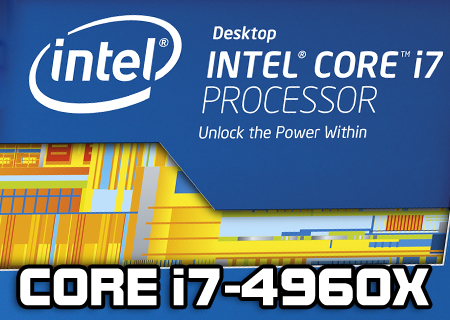Intel X79 Core i7 4960X Review
Conclusion
As we said at the start, the LGA2011 range so far hasn’t been the biggest success Intel have ever had. It’s too expensive for the amount of performance that the average user will require. However, if you need extraordinary amounts of power for rendering, or video encoding, or Photoshop work, then the level of power available was too good to be denied.
With the release of the Core i7-4960X have refined the first generation of LGA2011 processors and brought them smack bang up-to-date. The three big improvements have made a big difference.
Firstly the reduction from a 32nm chip as we saw with the Sandy Bridge-E i7-3960X to the 22nm process on the Ivy Bridge-E i7-4960X. This should give us three benefits if past history is anything to go on. Lower power draw is the first, and certainly the i7-4960X is more efficient than the original i7-3960X. This lower power will give us cooler temperatures. At stock this is definitely the case, although overclocked we reach the same maximum temperature. That is largely because we always overclock to the limits, but 8°C cooler out of the box is a massive improvement. Finally the efficiency and lower temperatures should enable us to overclock further. This isn’t the case with the i7-4960X. We ended up 150MHz behind the overclock that we achieved on the i7-3960X. However, and this is the important thing, more often than not we’re getting equal performance for a slower clock speed than we saw from the SB-E CPU. So whilst the number isn’t as impressive, the results still are.
The second big change is the stronger memory controller which supports 64GB and 1866MHz as standard. Of course we all know that Intel’s claimed speed isn’t a patch on what is obtainable otherwise 2000MHz+ memory kits wouldn’t exist. With the i7-3960X we struggled to consistently attain 2400MHz whereas on the i7-4960X it was simplicity itself. Indeed it was so easy that we could overclock our 2400MHz kit to 2600MHz.
The final improvement is one that, on our current test setup, is harder to quantify in our benchmarks, and that’s the PCI Express 3.0 as an on-CPU feature, along with 40 PCIe lanes to give you loads of bandwidth. With a single GPU this isn’t something that will make a difference, and so it proved in our 3D benchmarks. But if you run a couple or more graphics cards and perhaps a PCIe SSD or RAID card then the benefits of 16/16/8 will certainly be felt. Given that this CPU is designed for the most power-hungry users who are likely to have a system stuffed with the best money can buy, that improvement is likely to make a big difference.
There are a couple of little niggles. Firstly there is no doubt that the i7-4960X is only for the very well-heeled or those who demand the absolute best regardless of cost. For almost everyone a quad-core CPU such as the i7-4770K will provide more than plenty. If you are a Youtube superstar who endlessly renders videos, or a Pixar-wannabe endlessly rendering fur, or just a Photoshop guru with a Wacom welded to your hand, then you can never have enough cores or enough performance. For gamers and surfers and the like, then it’s extremely hard to justify the expense. The second is that the big improvements to the i7-4960X coupled with our knowledge of what is achievable on a Z87, really makes the X79 seem a little .. old. Of course that’s not a fault of the i7-4960X, just if you buy one you have to put it in something, and a motherboard full of SATA 3Gb/s and USB 2.0 ports is a little behind the times.
So the Intel Core i7-4960X is a refinement of an already hugely powerful processor, now with enough extra features under the hood coupled to lower power and lower temperatures make for a very attractive proposition if you’re in the market for a seriously high performance CPU. Of course that price is eye-watering, but the best is rarely a bargain. We’re happy to award the Intel Core i7-4960X our OC3D Performance Award.
Thanks to Intel for supplying the i7-4960X for review. Let us know what you think in the OC3D Forums.




